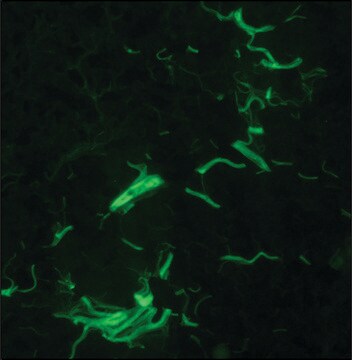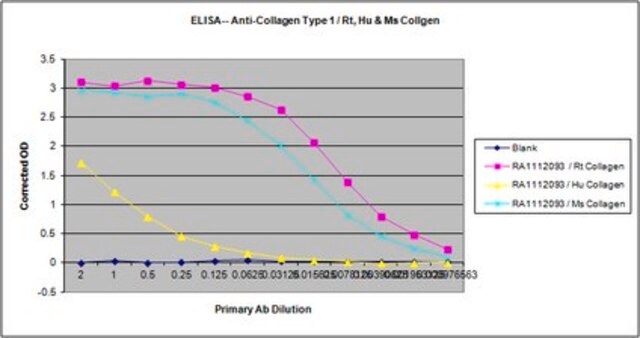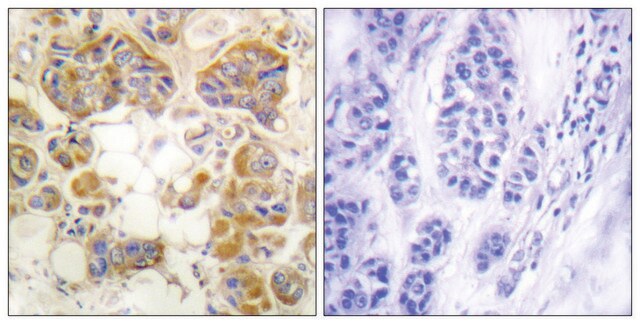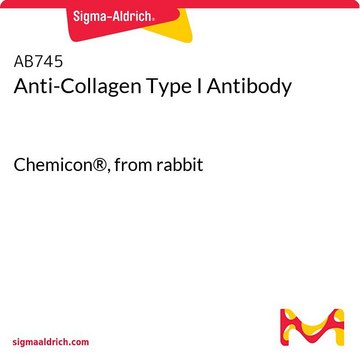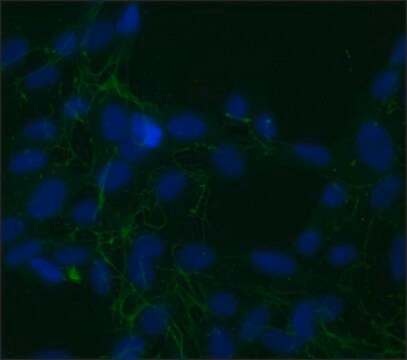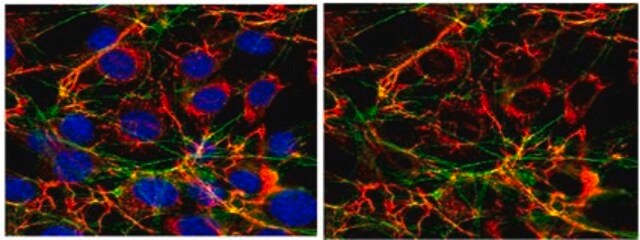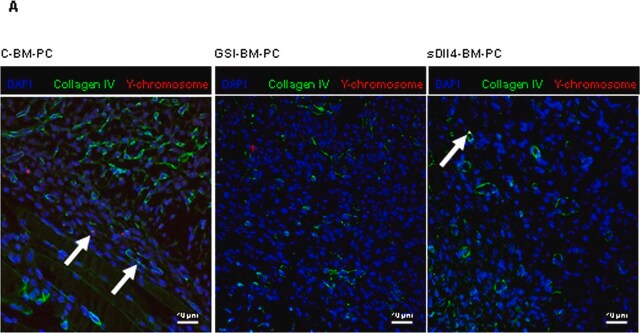AB765P
Anti-Mouse Collagen Type I Antibody
Chemicon®, from rabbit
Sinonimo/i:
Anti-CAFYD, Anti-EDSC, Anti-OI1, Anti-OI2, Anti-OI3, Anti-OI4
About This Item
Prodotti consigliati
Origine biologica
rabbit
Livello qualitativo
Forma dell’anticorpo
serum
Tipo di anticorpo
primary antibodies
Clone
polyclonal
Reattività contro le specie
mouse
Produttore/marchio commerciale
Chemicon®
tecniche
ELISA: suitable
immunohistochemistry: suitable
radioimmunoassay: suitable
western blot: suitable
Isotipo
IgG
N° accesso NCBI
N° accesso UniProt
Condizioni di spedizione
dry ice
modifica post-traduzionali bersaglio
unmodified
Informazioni sul gene
human ... COL1A1(1277)
Descrizione generale
Specificità
Immunogeno
Applicazioni
Struttura cellulare
Proteine dell′ECM
un lotto precedente alla diluizione 1:500 ha permesso di rivelare il collagene di tipo I in 10 μg di lisato di fegato di topo.
Immunoistochimica:
un lotto precedente alla diluizione 1:40 è stato utilizzato per l'immunocolorazione in fluorescenza di tessuti epatici e cutanei di topo congelati.
RIA:
in un saggio RIA è stato utilizzato un lotto precedente alla diluizione 1:200.
ELISA:
un lotto precedente di questo anticorpo è stato utilizzato in un saggio ELISA.
Descrizione del bersaglio
Linkage
Stato fisico
Stoccaggio e stabilità
Risultati analitici
Altre note
Note legali
Esclusione di responsabilità
Non trovi il prodotto giusto?
Prova il nostro Motore di ricerca dei prodotti.
Codice della classe di stoccaggio
12 - Non Combustible Liquids
Classe di pericolosità dell'acqua (WGK)
WGK 1
Punto d’infiammabilità (°F)
Not applicable
Punto d’infiammabilità (°C)
Not applicable
Certificati d'analisi (COA)
Cerca il Certificati d'analisi (COA) digitando il numero di lotto/batch corrispondente. I numeri di lotto o di batch sono stampati sull'etichetta dei prodotti dopo la parola ‘Lotto’ o ‘Batch’.
Possiedi già questo prodotto?
I documenti relativi ai prodotti acquistati recentemente sono disponibili nell’Archivio dei documenti.
I clienti hanno visto anche
Il team dei nostri ricercatori vanta grande esperienza in tutte le aree della ricerca quali Life Science, scienza dei materiali, sintesi chimica, cromatografia, discipline analitiche, ecc..
Contatta l'Assistenza Tecnica.